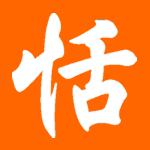http://flickr.com/photos/tiangotlost/490223003/
Since I personally have yet seen the film, Prof. Gorni described the scene to me as the following:
The main character gets the tattoo after his high school final exam. His buddies ask him what the chacaters mean. His answers "peace, love, bread" (yes, in this order!). When asked "why bread?", he explains that the tattooist had proposed "peace, love, freedom", but he just didn't like the shape of "freedom", and settled for "bread" instead, because it looked better.The correct translation for 愛和夢 is "love and dream" if they are read as one complete phrase.
Later in the movie, some girls ask him about the tattoo, and he gives the meaning as "peace, love, angel of death" (yes, in this order; no reference to bread).
Nowhere in the movie there is a clear indication that anybody was aware that anything specific was wrong with the tattoo. They only say, "luckily enough, nobody knows Japanese around here".


Heh heh...love and bread, eh?
ReplyDeleteYou know, thanks to your site I have to battle almost weekly with the desire to yank some poor white person aside and break the horrible news to them that their tattoo is gibberish.
And of course they're always HUGE tattoos. Why is it that people need their Chinese/Japanese characters seen from space?
You know what they say about a person with large tattoos... ;)
ReplyDeleteIn Chinese, the middle character is both "and" and "peace". So Love, Peace and... is fine, but where did the bread come from?
ReplyDeleteNice blog, by the way!
/Inger - sinologist in Sweden
Well, in Japanese, it's the same meaning as you described, except the middle character 和 is peace/harmony.
ReplyDeleteSo, if it were read in Japanese, it would be "Love - Harmony - maerD" (i.e., three separate words). If it were read in Chinese, then yeah, "Love & (s)maerD" is it. K
Another, especially bad example of a wrong-way-round tattoo of a Chinese character can be seen here:
ReplyDeletehttp://www.rankmytattoos.com/Oregon/Eugene/11512.html
It's supposed to say 善悪, or "good and evil," in big, bold characters on the wearer's leg, but, aside from how poorly both are written, the first character is upside down.
Seeing that "夢" backwards made me think of the cover for 張韶涵's latest album 夢裡花, where the character is also reversed. Wilbur Pan did the same thing for 反 in 反轉地球.
ReplyDeleteyes, in Japanese 愛和夢 is "Love Peace Dream".
ReplyDeleteIt reminds me of something stereotypical that a girl would get to sound sentimental XD Since the first thing other students usually ask me is, "how do you write... "love", "dream", "beautiful" "cute" etc... in Japanese, when they learn that I can write Japanese.